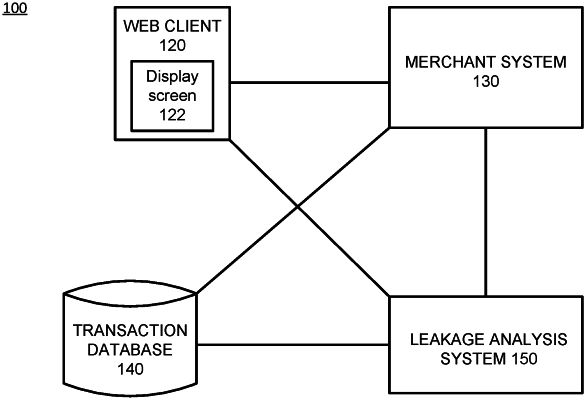| CPC G06Q 20/40 (2013.01) [G06Q 20/085 (2013.01); G06Q 30/018 (2013.01)] | 17 Claims |

|
1. A method comprising:
receiving, by a computing device of a transaction account issuer, a transaction history comprising transaction information associated with a plurality of transactions for an entity, wherein the transaction information involves transactions completed between employees of the entity and one or more merchants, wherein the transaction information is maintained in a transaction database of the transaction account issuer;
designating, by the computing device, a type of data as a key field in transaction data records, wherein the transaction data records are associated with employees of an external company that is a customer of the transaction account issuer;
linking, by the computing device, the transaction data records based on the type of data in key fields;
searching for transaction history data within the linked transaction data records and the transaction information, using a neural network-based unsupervised machine learning algorithm by the computing device, the linked transaction data records and the transaction information associated with a transaction of the plurality of transactions;
detecting, using the machine learning algorithm by the computing device, one or more leakage events associated with the transaction, the one or more leakage events comprising a first leakage event, wherein the first leakage event indicates a non-compliance of a spending rule of the entity by a participant in the transaction, wherein the spending rule specifies a desired payment method for the transaction, wherein the one or more detected leakage events are analyzed as inputs to improve performance of the machine learning algorithm via a closed loop of the machine learning algorithm;
rendering, by the computing device, a network-based graphical user interface and loading the network-based graphical user interface into memory, wherein the network-based graphical user interface comprises one or more graphical user interface windows having one or more user-scrollable slider controls;
outputting, by the computing device on a display device, one or more action items to resolve the one or more leakage events to the one or more graphical user interface windows having the one or more user-scrollable slider controls, wherein the one or more action items include onboarding a merchant to accept the desired payment method for the transaction or issuing a transaction instrument to the participant in the transaction allowing use of the desired payment method for the transaction;
performing, by the computing device, an analysis of a compliance level of the entity based on performing the detection of the one or more leakage events for the plurality of transactions;
comparing, by the computing device, the compliance level of the entity with one or more industry peers of the entity, wherein transaction information for the one or more industry peers is maintained in the transaction database of the transaction account issuer;
loading, by the computing device, the compliance level of the entity into memory; and
outputting, to the network-based graphical user interface by the computing device on the display device, the compliance level of the entity that indicates an amount of employees of the entity that have been detected to participate in leakage events corresponding to the spending rule in comparison with the compliance level of the one or more industry peers of the entity.
|